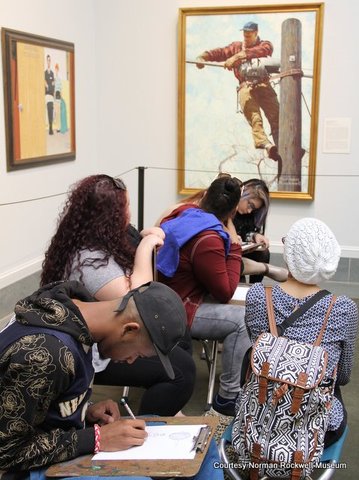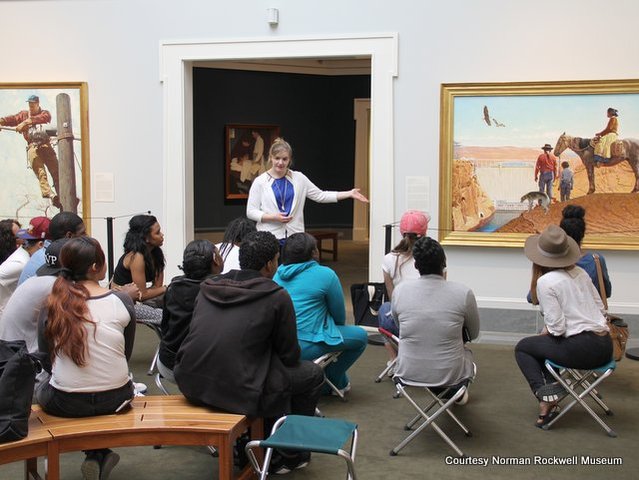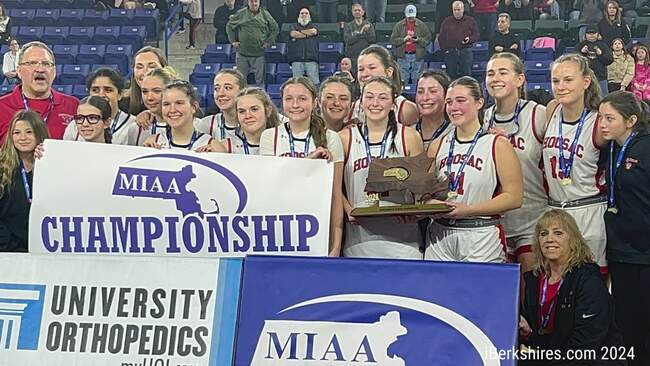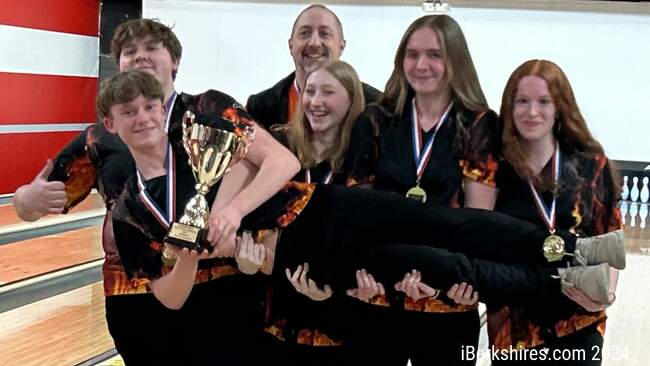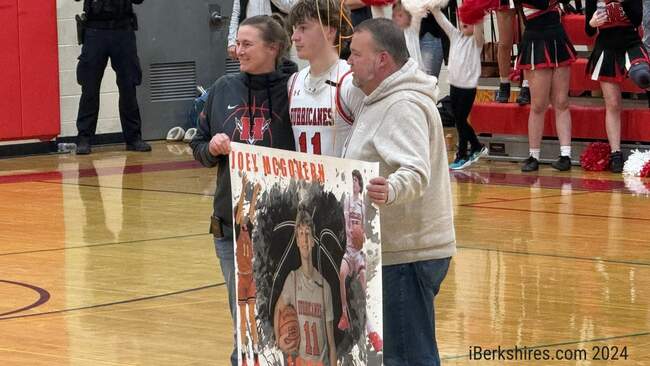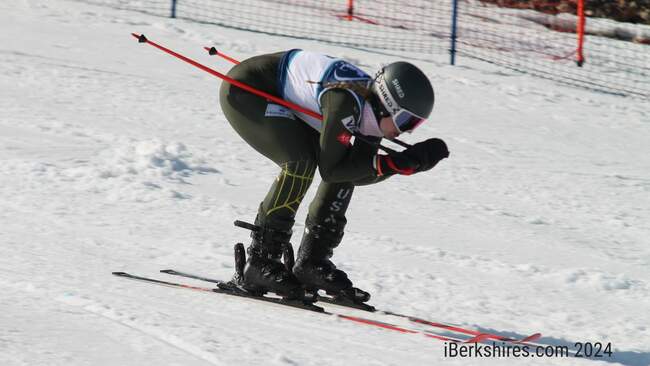NYC Teens Find Connection With Norman Rockwell
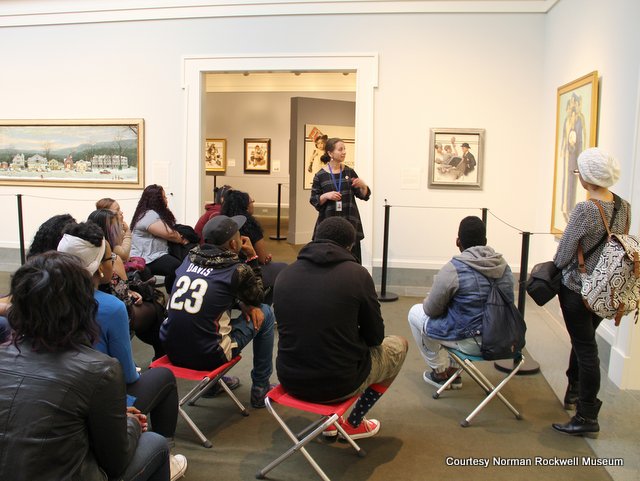 Rockwell Museum's chief curator Stephanie Plunkett discusses some of Norman Rockwell's works with a group of students from Reynolds West Side High School. Rockwell Museum's chief curator Stephanie Plunkett discusses some of Norman Rockwell's works with a group of students from Reynolds West Side High School. |
STOCKBRIDGE, Mass. – Norman Rockwell spent the last years of his life in the bucolic Berkshires but his roots were in the Big Apple.
Now young fans from a Manhattan high school are working to have the iconic artist's name memorialized near his childhood home.
Edwards A. Reynolds West Side High School teacher Renee Mills said her class discovered a passion for Rockwell's art during their first field trip to Stockbridge three years ago – and it bloomed into civil action when the students returned home and realized that the street where Rockwell spent his early childhood (a block from their school) made no mention of him.
"They wanted to know why the street wasn't named after such an influential artist," said Mills, an English and humanities teacher. "And they were totally amazed when I told them they could do something to change that."
Mills and her students from the alternative school were at the Norman Rockwell Museum on Thursday for their third annual field trip and talked about their efforts to petition to place a secondary signage naming West 103rd Street "Norman Rockwell Place."
The students, under Mills' guidance, made posters, handed out fliers, and even had T-shirts made before writing the petition and getting more than 400 signatures to submit to their local community board. The museum has also lent its support to the effort.
"It'll be great – when people get off the subway at 103rd, they're going to see that secondary sign," said Mills. "People can start using that as a stop-off, take-pictures kind of thing."
The school will be receiving the resolution from City Council sometime this summer, and both teacher and students – past and present – are eager to see the culmination of all their hard work.
"I look at this as like an internship," said Mills. "It still goes on; even kids who've graduated are still a part of this."
She is hoping that all of the students who were in the initial class that imagined this project will be involved in its conclusion – she proudly pointed out three former students who had come to the Rockwell Museum for the third time.
The appeal of Rockwell's art is that he painted American life from perspectives not usually embraced by artists at the time: pictures of children and families in their everyday pursuits. Mills enjoyed teaching her students about his "social consciousness pieces" and his depictions of great moments in history, like the Civil Rights Movement. She even put on a photo shoot at the school where her students posed as subjects from Rockwell's work, reflecting the Berkshire residents who were the original models.
She also encouraged the students to come to school on their day off to see a community board meeting in person.
"They heard people come and talk about [community concerns]," Mills said. "They were like, 'people can actually come and complain about this stuff?' And I told them, 'sure you can.'
"It's a civics lesson; no one had told them they could do that."
During their field trip, the students were given paper and pencils with which to copy an original Rockwell painting of their choice, and then were divided into groups to discuss their reactions and interpretations with curator of education Tom Daly and chief curator Stephanie Plunkett.
Students noticed things like the imbalance of minority subjects versus white subjects, as well as the portrayal of gender roles. As one student described a painting of a black-eyed husband and his contrite wife behind a door that read "Marriage Counseling":
"It's like she's saying, 'I love you, but don't test me.'"
They also noticed the subtle human dignity that each and every painting had, which Mills said was the appeal of Rockwell's work. Her students, who attended the high school "in the projects," were able to relate to, appreciate, personally interpret, and connect with the mid-20th-century art.
And they were then able to translate that into an act of social change – one of which Rockwell himself likely would have been proud.
Tags: norman rockwell museum,

